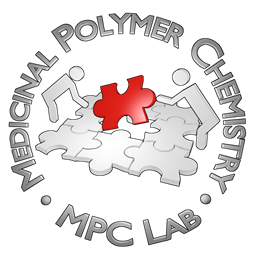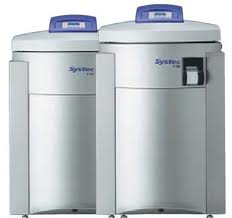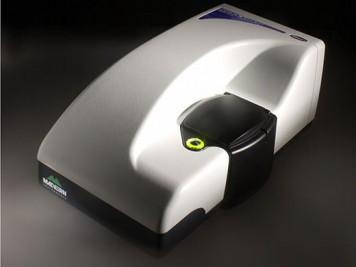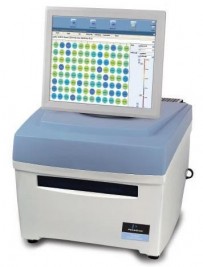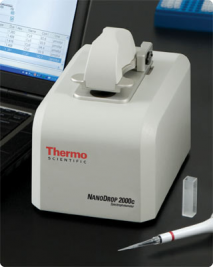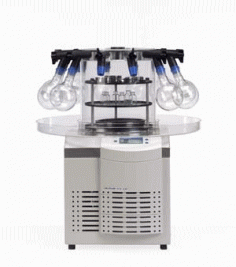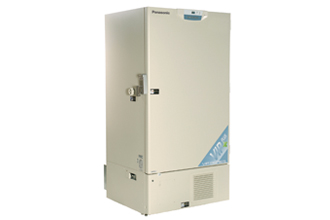GPC- RI LS with PDA
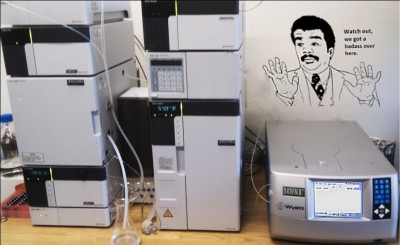 Shimadzu Gel permeation Chromatography (GPC) with a RID10A refractive index detector (RI), a Wyatt Heleos 8 angle static light scattering (LS) detector and a SPD-M20A photodiode assay (UV-vis PDA).
Shimadzu Gel permeation Chromatography (GPC) with a RID10A refractive index detector (RI), a Wyatt Heleos 8 angle static light scattering (LS) detector and a SPD-M20A photodiode assay (UV-vis PDA).This GPC setup gives the possibility to separate macromolecules in b
oth aquatic and organic solvents. The LS-RI detectors can determine the molecular weight, without referring to standards or assuming the conformation of the polymer. It also determines the polydispersity (PDI), root mean square radius (Rg), gross molecular architecture of the macromolecule (globular, linear or random coil architecture in solution, degree of branching in dendrimers, number of conjugated polymers attached to a given molecule etc.) and the second virial coefficient (A2). This allows for a thorough characterization of polymers, and also a differentiating the sample by identifying and characterizing aggregates.
For biomolecules it can thus determine the stoichiometry of PEGylated and glycosylated protein complexes, and also the reactivity rates or equilibrium constants for two reactant systems
The PDA continuously measures a full UV-vis spectrum of the eluate, useful in characterizing conjugated polymer systems and polymers with conjugated dyes.
The instrument is co-owned with Mogens Hinge (GPC-LS-RI) and Kurt Gothelf (PDA)
Shimadzu LC-2010HT High-performance Liquid Chromatograph (HPLC)
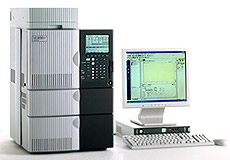 The LC-2010HT is a compact and completely integrated high-throughput HPLC system. It is equipped with an internal autosampler and UV-detector. Alternatively it can be connected to the PDA detector shared with the GPC.
The LC-2010HT is a compact and completely integrated high-throughput HPLC system. It is equipped with an internal autosampler and UV-detector. Alternatively it can be connected to the PDA detector shared with the GPC.The following Ascentis Express columns are currently available:
• C18 2.7µm (150x3mm)
• RP-Amide 2.7µm (150x3mm)
• Peptide ES-C18 2.7µm (150x3mm)
• F5 2.7µm (150x3mm)
Cell Culture facilities
Systec Autoclave
Zeiss Axio Observer Z1
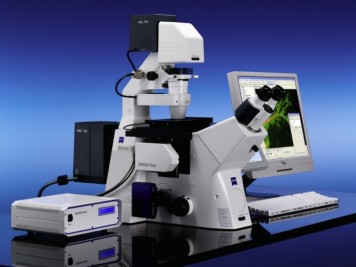 The Zeiss Axio Observer Z1 is an inverted optical microscope and can be utilized to obtain differential interference contrast (DIC) and fluorescence images. The microscope is currently equipped with 10x, 40x, and 63x magnification objectives as well as filter sets 38 HE, 43 HE, and 49 for fluorescence microscopy. Additionally, the microscope has a digital camera and is attached to a computer.
The Zeiss Axio Observer Z1 is an inverted optical microscope and can be utilized to obtain differential interference contrast (DIC) and fluorescence images. The microscope is currently equipped with 10x, 40x, and 63x magnification objectives as well as filter sets 38 HE, 43 HE, and 49 for fluorescence microscopy. Additionally, the microscope has a digital camera and is attached to a computer.BD Accuri C6 Flow Cytometer
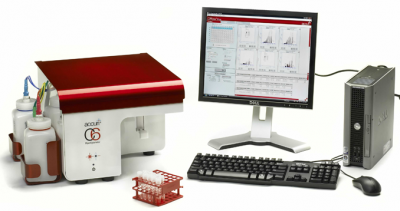 BD Accuri C6 flow cytometer can be used to measure elements of interest (minimum detectable size: 0.5 µm) on a single particle level. The system includes blue and red lasers, four color detectors (FL1 533 / 30 nm (e.g. FITC/GFP), FL2 585 / 40 nm (e.g. PE/PI), FL3 >670 nm (e.g. PerCP, PerCP-CyTM5.5, PE-Cy7) and FL4 675 / 25 nm (e.g. APC)), and both forward and side scatter detectors.
BD Accuri C6 flow cytometer can be used to measure elements of interest (minimum detectable size: 0.5 µm) on a single particle level. The system includes blue and red lasers, four color detectors (FL1 533 / 30 nm (e.g. FITC/GFP), FL2 585 / 40 nm (e.g. PE/PI), FL3 >670 nm (e.g. PerCP, PerCP-CyTM5.5, PE-Cy7) and FL4 675 / 25 nm (e.g. APC)), and both forward and side scatter detectors.Malvern Zetasizer Nano S90
EnSpire Multimode Plate Readers
Thermo Scientific Nanodrop 2000c
Millipore Milli-Q Direct 8
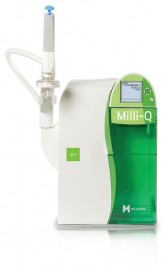 The Direct 8 system delivers both Type 3 pure and Type 1 ultra-pure water. Milli-Q grade ultra-pure water is obtained through a combination of a Jetpore ion-exchange resin, synthetic activated carbon and UV lamp emitting at 185 and 254 nm, resulting in a resistivity of 18.2 MΩ.cm and a TOC value below 5 ppb. The produced water is further purified with a POD pak for DNAse, RNAse and pyrogen-free water.
The Direct 8 system delivers both Type 3 pure and Type 1 ultra-pure water. Milli-Q grade ultra-pure water is obtained through a combination of a Jetpore ion-exchange resin, synthetic activated carbon and UV lamp emitting at 185 and 254 nm, resulting in a resistivity of 18.2 MΩ.cm and a TOC value below 5 ppb. The produced water is further purified with a POD pak for DNAse, RNAse and pyrogen-free water.
The instrument is co-owned with Thomas Poulsen.
